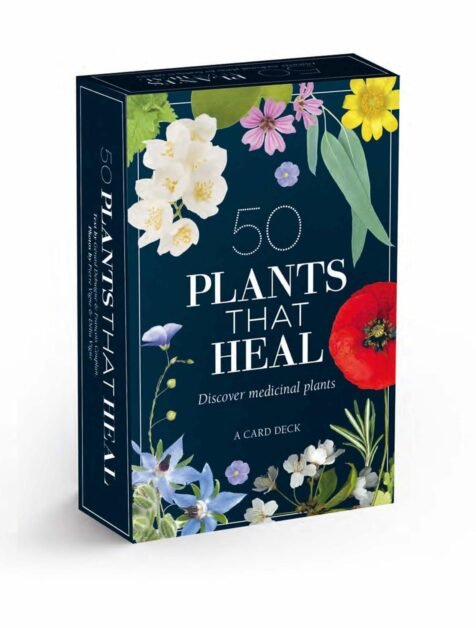Exploring Alternative Pain Management: A Comprehensive Guide
Hey there! If you’re searching for a comprehensive guide to alternative pain management, you’ve come to the right place. At Alternative Medicine Facts, we’re all about holistic healing and exploring different approaches to wellness. Our mission is to equip you with reliable, evidence-based information on various alternative medicine practices, so you can make informed decisions about your health and well-being. In this article, we’ll be diving into the world of alternative pain management, exploring different techniques and therapies that can help alleviate pain naturally. So, let’s get started and explore the exciting realm of alternative pain management together!




Exploring Alternative Pain Management: A Comprehensive Guide
When it comes to managing pain, many people are turning to alternative approaches that offer different options from traditional medical treatments. Alternative pain management focuses on holistic healing and aims to address both the physical and emotional aspects of pain. In this comprehensive guide, I will explore various alternative pain management techniques, their benefits, and factors to consider before trying them.
Understanding Alternative Pain Management
Alternative pain management refers to non-conventional methods used to alleviate or manage pain. Unlike traditional medical treatments that often rely on medications or surgical interventions, alternative approaches take a more holistic approach, considering the overall well-being of the individual. These methods focus on addressing the root causes of pain and promoting healing from within.Benefits of Alternative Pain Management
One of the primary benefits of alternative pain management is the potential for fewer side effects compared to conventional medications. Many alternative techniques aim to promote natural healing mechanisms in the body, which can lead to long-term pain reduction or even elimination. Additionally, these methods often consider the mind-body connection, recognizing the impact of mental and emotional well-being on pain perception.Types of Alternative Pain Management
There are numerous alternative pain management techniques available, each with its own unique approach. Some of the most common methods include:1. Herbal Remedies
Herbal remedies have been used for centuries to alleviate pain and promote healing. From turmeric to ginger and willow bark, many plants contain natural compounds that have analgesic properties. However, it is essential to consult with a qualified practitioner before starting any herbal regimen to ensure safety and effectiveness.2. Acupuncture
Acupuncture is a traditional Chinese medicine practice that involves the insertion of thin needles into specific points on the body. It is believed to stimulate the flow of energy and promote pain relief. Many individuals find acupuncture helpful in managing both acute and chronic pain conditions.3. Massage Therapy
Massage therapy involves manipulating the body’s soft tissues to alleviate pain, reduce muscle tension, and promote relaxation. Various massage techniques, such as Swedish, deep tissue, and trigger point therapy, can target specific areas of pain and promote overall well-being.4. Chiropractic Care
Chiropractic care focuses on aligning the spine and musculoskeletal system to alleviate pain and improve physical function. Chiropractors use manual manipulation and adjustment techniques to restore proper alignment, which can be beneficial for conditions such as back pain, neck pain, and headaches.5. Physical Therapy
Physical therapy involves the use of exercises, stretches, and manual techniques to improve physical function and reduce pain. A qualified physical therapist can create a customized treatment plan tailored to individual needs, addressing specific pain areas and underlying issues.
6. Meditation and Mindfulness
Meditation and mindfulness practices aim to cultivate a focused and present state of mind, which can help individuals manage pain more effectively. By training the mind to redirect attention and develop a non-judgmental attitude towards pain, individuals may experience reduced pain intensity and improved overall well-being.7. Yoga and Tai Chi
Yoga and Tai Chi combine gentle movements, breathing exercises, and meditation to promote physical strength, flexibility, and mental relaxation. These practices can improve body awareness and help individuals manage chronic pain conditions effectively.8. Biofeedback
Biofeedback involves using electronic devices to measure and provide feedback on physiological functions such as heart rate, blood pressure, and muscle tension. By learning to control these bodily responses, individuals can gain better control over their pain and potentially reduce its intensity.9. Hypnosis
Hypnosis is a technique that aims to access the subconscious mind to promote positive changes in perceptions, behaviors, and experiences. When used for pain management, hypnosis can help individuals alter their pain perception and develop coping mechanisms.
10. Aromatherapy
Aromatherapy utilizes essential oils derived from plants to promote relaxation, reduce pain, and improve mood. Different essential oils have varying properties and can be used topically, inhaled, or added to a bath for pain relief.11. Music Therapy
Music therapy involves the use of music to promote relaxation, reduce stress, and manage pain. Music has the ability to uplift moods, distract from pain, and create a soothing environment during painful episodes.12. Heat and Cold Therapy
Applying heat or cold to the affected area can provide temporary pain relief and reduce inflammation. Heat therapy, such as using heating pads, can relax muscles, while cold therapy, such as ice packs, can numb the area and reduce swelling.13. Energy Healing
Energy healing techniques, such as Reiki or Qigong, focus on balancing the body’s energy flow to promote healing and pain relief. Practitioners believe that imbalances in energy can lead to physical discomfort, and by restoring balance, pain can be alleviated.
14. Essential Oils
Essential oils are concentrated plant extracts that can be used topically, inhaled, or ingested for pain management. Oils such as lavender, peppermint, and eucalyptus have analgesic properties and can offer natural relief from pain.15. Support Groups
Being part of a support group allows individuals to connect with others who share similar experiences and challenges. By sharing their stories and coping strategies, individuals can gain emotional support and practical advice for managing pain.Factors to Consider Before Trying Alternative Pain Management
Before trying any alternative pain management technique, it is crucial to consider several factors. First, consult with your healthcare provider to ensure that the chosen approach is suitable for your specific condition and medical history. Additionally, consider the potential costs, time commitment, and availability of practitioners in your area.Safety Precautions for Alternative Pain Management
While alternative pain management techniques are generally safe, it is essential to take necessary precautions. Always consult with a qualified practitioner or healthcare provider before starting any new treatment. Be aware of any potential allergic reactions, drug interactions, or contraindications for specific techniques or herbal remedies.Potential Side Effects and Risks
Although alternative pain management techniques are generally considered safe, some individuals may experience side effects or risks. These can include soreness after a massage, temporary bruising from acupuncture, or allergic reactions to certain herbal remedies. It is important to be mindful of these possibilities and communicate any concerns with your practitioner.Integration of Alternative and Conventional Pain Management
Alternative pain management techniques can often be used in conjunction with conventional medical treatments. It is crucial to keep your healthcare provider informed about any alternative approaches you are considering to ensure they complement your existing treatment plan and do not interfere with any prescribed medications or therapies.Talking to Your Doctor about Alternative Pain Management
When exploring alternative pain management, it is important to have an open and honest conversation with your healthcare provider. Share your interest in alternative approaches, discuss your pain management goals, and ask for recommendations or referrals. Your doctor can provide valuable insights and help guide you towards qualified practitioners.Finding a Qualified Alternative Pain Management Practitioner
To ensure you receive safe and effective care, it is essential to find a qualified alternative pain management practitioner. Look for certifications, licenses, or memberships in relevant professional organizations. Seek recommendations from trusted sources, such as your healthcare provider or friends who have had positive experiences with alternative therapies.Resources for Exploring Alternative Pain Management
Several resources can provide further information on alternative pain management techniques. Online platforms such as Alternative Medicine Facts and reputable medical websites often offer evidence-based information and research on different approaches. Books, documentaries, and support groups can also provide valuable insights and personal experiences to aid your exploration.Conclusion
Exploring alternative pain management techniques can offer individuals a variety of options to manage and alleviate pain. From herbal remedies to massage therapy, acupuncture to meditation, there are numerous approaches available that consider both the physical and emotional aspects of pain. However, it is crucial to approach alternative methods with caution, considering factors such as safety, potential risks, integration with conventional treatments, and qualified practitioners. By taking the time to gather information, consult with healthcare professionals, and make informed decisions, individuals can find the best approach to manage their pain and enhance their overall well-being.







